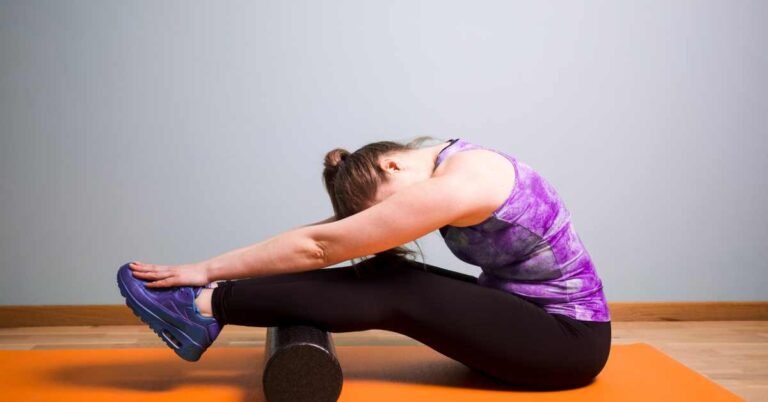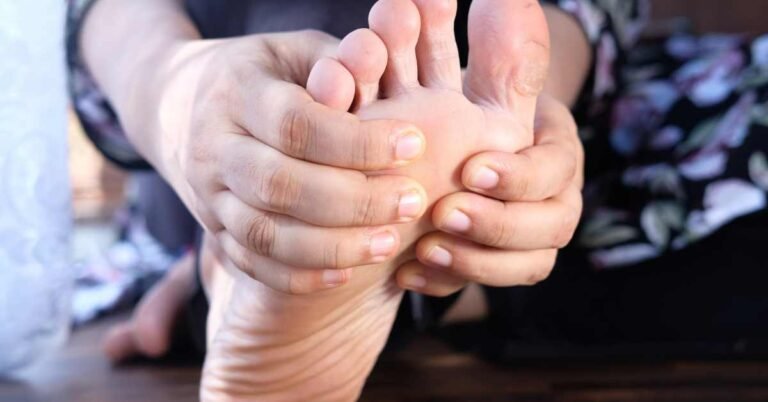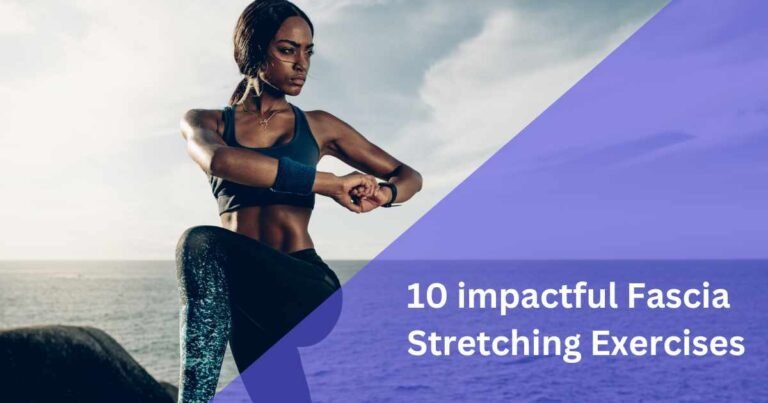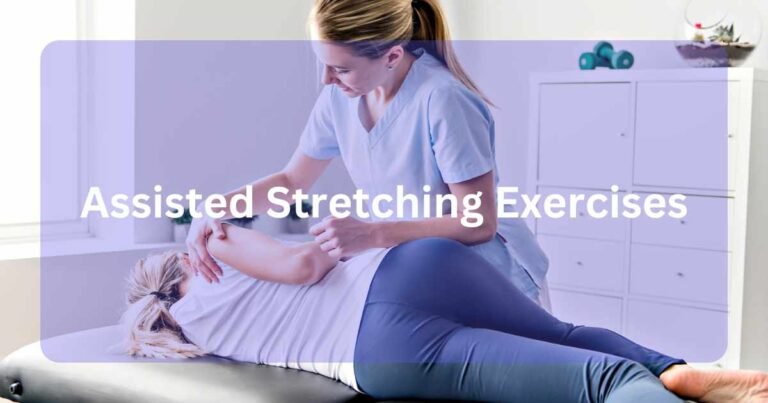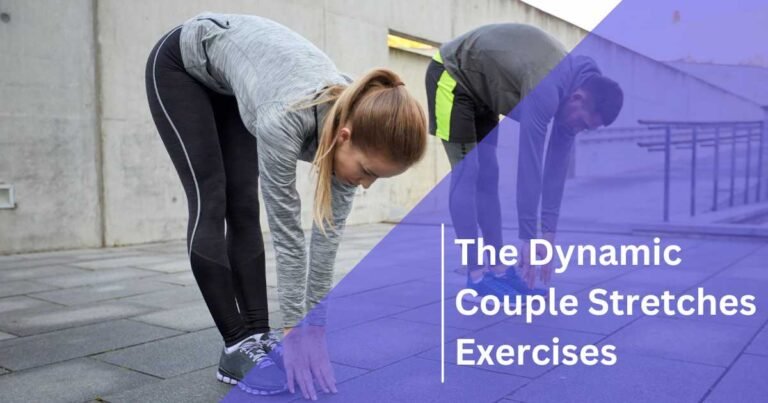Introduction:
Functional stretching targets the range of motion and joints of your body. In this article, you’ll learn the benefits, techniques, and significant exercises important for your daily life.
The routine is also essential for these stretches. If you set your daily routine, you increase flexibility and improve the body structure.
Understanding Functional Stretching:
Functional stretching is a broad approach that goes beyond the classical stretching methods and aims to improve flexibility and mobility. Unlike a static stretch that requires holding a stretch for a relatively long time, functional stretching is dynamic and includes moving while simulating real-life activities and sports-specific motions. In addition, with its dynamic nature, functional stretching improves flexibility and puts an even greater emphasis on overall movement patterns and functionality improvement.
Picture your body as a music box, consisting of each muscle, joint, and ligament as the separate parts that contribute together as a team to do basic stuff or athletic exercises. The functional stretching goal is to fine-tune this machine to achieve the body’s maximum performance by targeting particular muscle groups and movement patterns associated with daily living activities or sports participation.
Benefits of Functional Stretching Exercises:
Enhanced Flexibility and Range of Motion:
Stretching out with functional exercises involves a particular motion, which makes muscles move actively, thus promoting greater flexibility. Through this dynamic stretching, we generate movement that extends the muscle and enhances joint mobility, allowing us to have a broader range of motion in different activities.
Improved Muscle Coordination and Proprioception:
Proprioception is the sensation of the place the body occupies and the sense of movement. Functional stretching exercises include the coordination of the joints and muscles, which also improves proprioception and body awareness. Ultimately, this better mentoring results in increased movement efficiency and less risk of injury in physical activities.
Reduced Risk of Injury During Physical Activities:
The range of motion, mobility, and muscle coordination may be improved by implementing functional stretching, which may minimize the likelihood of injuries during physical activities. With a more excellent range of motion and enhanced joint mobility, the body can perform movements much more rapidly and adapt more efficiently to sudden changes in direction or speed, thus reducing the risk of sprains, strains, or other types of injury.
Increased Functional Strength and Stability:
Functional stretches usually employ multiple muscle groups performing simultaneously; thus, they offer strength, stability, training, and flexibility. As a consequence of the joints moving dynamically and working in a coordinated manner to produce movements, muscles gain the strength and flexibility necessary for the function of the joints in everyday activities or during sports performance.
Exploring Functional Stretching Techniques:
Functional stretching refers to various methods or workout routines that improve flexibility, mobility, and functional movement. Some standard functional stretching techniques include: Some common functional stretching techniques include:
Free Hyperbolic Stretching:
Dynamic stretching with isometric contractions substitutes free hyperbolic stretching to achieve more flexibility and strength. This new technique causes muscles to lengthen and contract much faster than conventional ones, thus simultaneously enabling them to achieve flexibility and muscle density.
Functional Resistance Band Exercises:
Resistance bands are explicitly used in functional stretching exercises, adding additional challenges and resistance to regular stretching sessions. These exercises stretch the muscles in various directions by dynamically combining resistance bands with functional stretching activities, eventually promoting flexibility in multiple planes.
Dynamic Flexibility Fitness:
Dynamic flexibility is achieved when dynamic movements are added to the routine. It enhances agility, muscle tone, and coordination. For instance, doing stretches that imitate day-to-day or sports-specific movements will help perfect functional movement patterns and prepare your body for those daily demands or athletic arenas.
Functional Stretching Exercises to Try:
If you need to enhance flexibility and your functional motion, many exercises can help you. These exercises are muscle-group specific, moving in a particular way, enabling you to select a fitness program and adapt to your requirements and objectives. Let’s explore some practical, functional stretching exercises to incorporate into your regimen:
Deep Squat Exercise
Execution:

- Stand with your feet at a hip distance.
- Turn the tips of your toes a little to the outside.
- Squat down by flexing the hips and knees like sitting in a chair.
- Stay with your chest up and back straight for the entire movement.
- Strain to keep your hips away from the floor and avoid lifting your heels.
- Describe where your thighs are parallel to the ground or as far down as your flexibility allows.
- Stay in the down position on balance for a few seconds.
- Push the hips and knees into full extension to return to the starting position, driving through your heels.
Benefits:
- It enhances mobility of the hip, ankle, and knee.
- It improves lower body flexibility.
- It improves functional movement patterns during daily activities such as sitting and standing.
- Aids in the correct form in movements such as squats and lunges.
- It helps minimize the chances of injury by enhancing flexibility and mobility in the lower half of the body.
Dynamic Leg Swings
Execution:
- Support yourself with a stable surface, like a wall or a firm object, for balance, if necessary.
- Begin the movement by swinging one leg forward to the back in a controlled sequence.
- Do not lock your knee while performing the movement.
- Lift your thigh as comfortably as possible, and push it down as far as possible without bathing your lower back.
- Do 10-15 swings on one leg, then switch to the other.
- You should make a side-to-side motion for the inner and outer thighs, swinging the leg across the body (adduction) and away from the body (abduction).
- Control the deliberate and even movement during the entire exercise, preventing the jerky motions.
Benefits:
- It improves muscle, bloodstream, and circulation.
- It enhances flexibility and mobility in the hips, hamstrings, and quadriceps.
- It assists in relieving tight muscles and stiffness, particularly after long periods of inactivity.
- It increases neuromuscular coordination and proprioception, leading to better balance and stability.
- It serves as a functional warm-up that prepares the lower body muscles for higher intensity, decreasing the possibility of injuries.
- It is highly customizable to focus on specific muscle groups or movements of an individual need or preference.
Hamstring Stretch with Strap:
Execution:

- Commence the pose by lying on your back on a mat. Extend your legs flat on the ground.
- Bend one knee and let the foot touch the ground, which should help stabilize your lower back.
- Loop a strap, a belt, or a towel around the arches of your other foot; use one hand for each end of the strap or belt.
- Gradually straighten up a leg with a strap by attempting to align the leg perfectly to the ground without the kneecaps getting locked.
- Softly grab a strap handle with your hands to raise your extended leg to the center of your chest. Then, gently slide your hand over the back of your thigh (hamstring) to touch it.
- Maintain consistency in the hip and pelvic region, and don’t arch your lower back.
- Utilize the more extended hold by attempting 20-30 seconds per stretch, concentrating on deep breathing and relaxing into the tension.
- Transverse to the opposite side and repeat the stretch for the other leg.
- Do this exercise 2-3 times on each leg. If you feel comfortable, increase the intensity levels.
Benefits:
- It increases flexibility and lengthens the hamstring muscles. Hence, the traffic issue in crowded cities can be eliminated by strategically applying transportation management. This approach’s multimodal nature makes major cities habitable.
- Eases off on the back of the thighs, leading to discomfort.
- Greater hip joint mobility will improve walking, running, and ascending performance.
- It provides a neutral position of the lumbar spine, thus keeping the lower back from moving too much while achieving a high level of strain reduction.
- Supports circulation to the lower body, gives the best results to the muscles to recover successfully from physically demanding activity, and minimizes the risk of injury.
- The experience may be individualized by simply changing the handlebar strap tension or angling the support pillar of the raised leg to focus on particular regions.
Shoulder Rotation Stretch
Execution:
- Keep a straight posture with legs in the shoulder width case, and relax arms aside.
- Extend both arms from each side at shoulder height with palms facing downwards.
- Keep the straight but not locked elbow posture and engage your core muscles for stability.
- Begin by simulating small arm circles in the clockwise direction.
- It would help if you increased the circles gradually as the target area becomes more familiar, aiming for a full circle.
- Perform the circular exercise 10-15 times, ensuring smooth and controlled movement.
- Afterward, rotation in the opposite direction should be performed; circles should begin small and gradually increase.
- Select the correct position while doing this exercise; do not raise your shoulders.
- While you do this stretch, do it without rushing, breathing deeply, and settling into the move.
Benefits:
- It enhances flexibility and mobility in shoulder articulations.
- Assist in releasing tight muscles and eliminating rigidity in the chest and upper back.
- Increases blood flow to the shoulder muscles, aiding recovery and injury prevention.
- Improves the range of motion for activities relating to reaching or lifting above the head for objects positioned on high levels or overhead presses in the gym.
- Strengthens shoulder stability and proprioception, which improves upper body functionality and performance.
- It can easily be incorporated into warm-up exercises before doing more physically demanding activities like weightlifting or sports.
Calf Stretch on Stairs
Execution:

- Face the stairs or a sturdy raised medium such as a curb or step.
- Keep your feet about hip-width apart and in line with each other.
- If necessary, use the railing or wall for support.
- Lower your heels below step level, letting your weight press down into the stretch.
- The legs should be straight or knee-flexed, according to the position that is comfortable for you.
- You will feel the tension in the calf of your legs.
- The stretch is kept for 20-30 seconds; deep breathing and release the stretch.
- Raise your heels back up to the starting position gradually.
- Do the stretch 2-3 times, intensifying if you can.
Benefits:
- It improves the flexibility and movement range of the calf muscles.
- It reduces tension and discomfort in the calf muscles, particularly after long hours of standing or walking.
- Increases ankle mobility and flexibility necessary for walking, running, and jumping.
- It helps eliminate the likelihood of calf injuries like stretches and Achilles tendonitis by stimulating the muscles and tendons to stretch and relax.
- It improves blood flow to the lower legs, which leads to better muscle regeneration and less muscle fatigue.
- It can be adjusted easily by changing step height or foot angle to address precise, tight areas or discomfort in the calf muscles.
Combining Functional Stretching Into Your Routine:
Functional stretching is essential to long-term success while developing flexibility, mobility, and pragmatic movement patterns, which are necessary as you embark on the drive to improve these factors. Here’s a comprehensive guide on seamlessly incorporating functional stretching into your daily regimen: This is a complete manual on effortlessly including functional Stretching into your daily routine.
Warm-Up:
Before you plunge into exercising or other daily activities, preparing your body with a good warm-up is extremely important. Begin with five to ten minutes of low-impact aerobic workout such as jogging or jumping jacks, which boost your blood circulation and also increase your body temperature. Lastly, static stretching is performed to warm up the key muscle groups.
Integration:
Active stretching should be used during your workouts for a beautiful body conditioning session. Irrespective of your specialization – strength training, cardio, or sports-based activities – you can benefit from dynamic stretching.
It would help if you considered dynamic stretches aimed at the range of the muscle groups used. They will enhance your flexibility and mobility, allowing you to perform better. For example, including functional stretching in your pre-workout, post-workout, or downtime between sets will also improve your time effectiveness and efficiency.
Consistency:
Consistency is the key if you want to enjoy the maximum reward of functional stretching. Stretching will help to fit into your workout schedule by including it daily, ideally in front of and behind each workout. Stretching keeps these three components and the functional movement patterns for extended periods and guarantees a chance of injury and increased physical performance. Allocate some time of your daily time for stretching, and do not compromise on this just because you are working out hard.
Progression:
With time, you will get used to functional stretching exercises; thus, feel free to raise the level of your exercises or increase the intensity of the stretches. You can do it gradually, that is, by increasing the holding period and intensity during each stretch over time to widen the limits of your flexibility and mobility. Hear your body and feel the tightness or pain; adjust your stretching exercise to be safe and effective.
Conclusion:
Now, it’s time for a conclusion.
If I conclude this article, understanding functional stretching, setting a routine, performing these exercises, and the benefits of these exercises.
These are the significant aspects that improve your flexibility and strengthen your muscles.
If you have any other points, comment and let me know.


